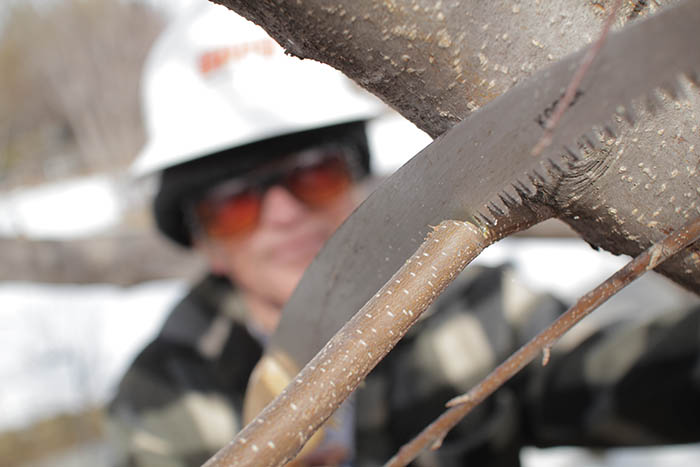Tree pruning now can prevent storm damage later

Proper tree pruning can lessen the effects of severe weather on your trees. This damage is often caused by defects in the tree.
One way to minimize these defects is to perform preventative pruning in the first 10 to 15 years of a tree’s life.
According to OPPD’s Forestry department, pruning promotes good structure and makes the tree more resistant to storms. This preventative pruning directs the growth of the tree by cutting branches that aren’t growing correctly.
Below are some common defects to look for. Correcting these defects now will help your trees withstand severe weather.
Codominant stems

These are stems of equal size originating from the same point on the tree. Codominant stems with a “V” shape at the joint often have “included bark,” which is bark pinched between two stems. This creates a weak union. Prune to eliminate this defect by leaving the stem that will give the tree a dominant leader.
Large lower limbs
Low branches on large shade trees are temporary, remove them early in a tree’s life. The lowest permanent branch on many shade trees should be 12 to 15 feet off the ground. Prune these branches early in the tree’s life to prevent larger pruning wounds in the future. If you remove these large limbs later in the tree’s life, it weakens the tree and makes it prone to storm damage.
Proper pruning
Follow the diagram below when trimming limbs from your tree. If a cut is correct, the branch collar of the tree (the bulge where the limbs join) should be intact. A proper cut will leave a round wound with the callus tissue forming a “donut” shape.

Laura King-Homan is the manager of Corporate Brand and Communication Operations, at Omaha Public Power District. She has nearly 20 years of print journalism and design experience, including the Omaha World-Herald.
View all posts by Laura King-Homan >








